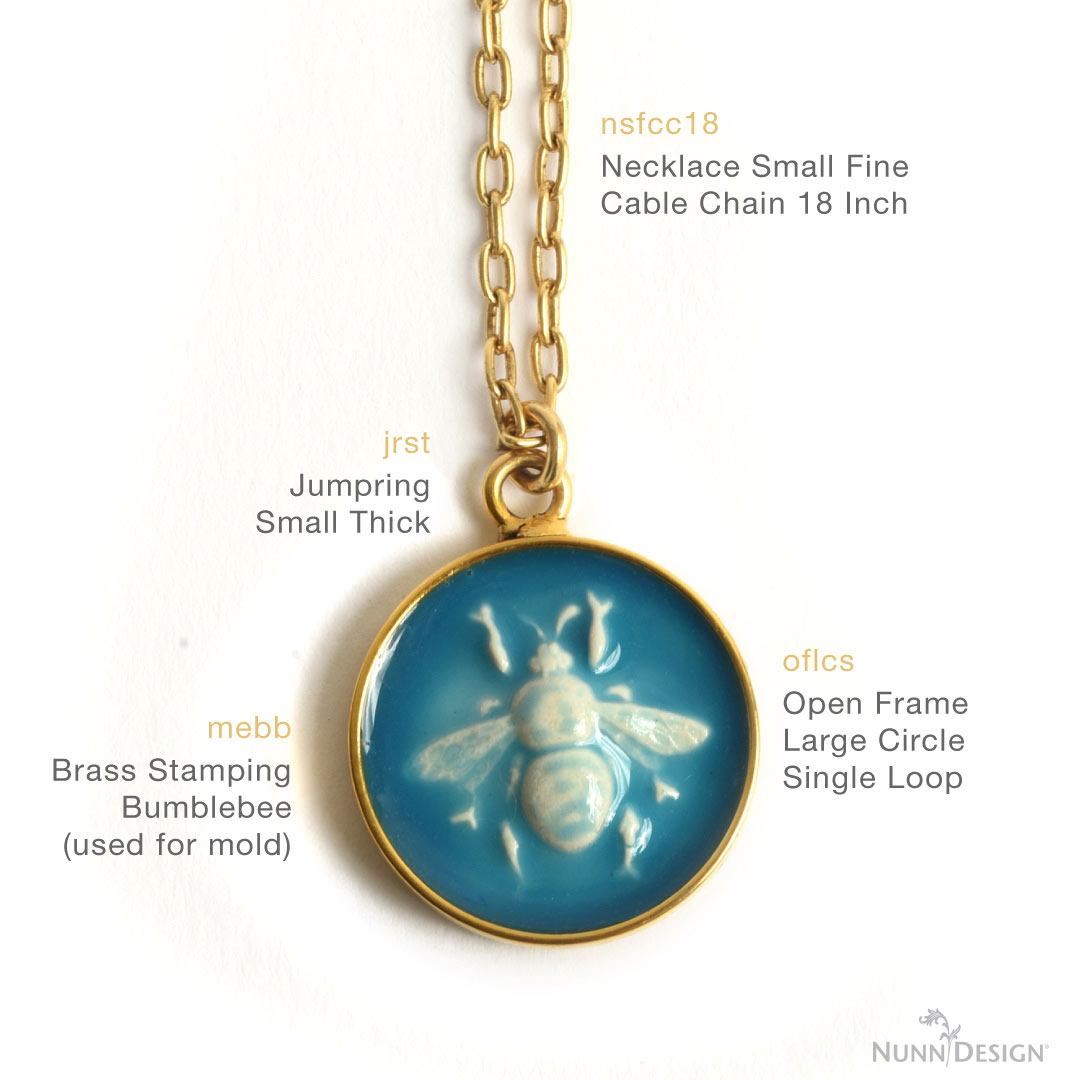Making/Using Molds, Tutorials
Make Sculpted Epoxy Clay, in an Open Frame Bezel, with Colorized Nunn Design 2-Part Resin
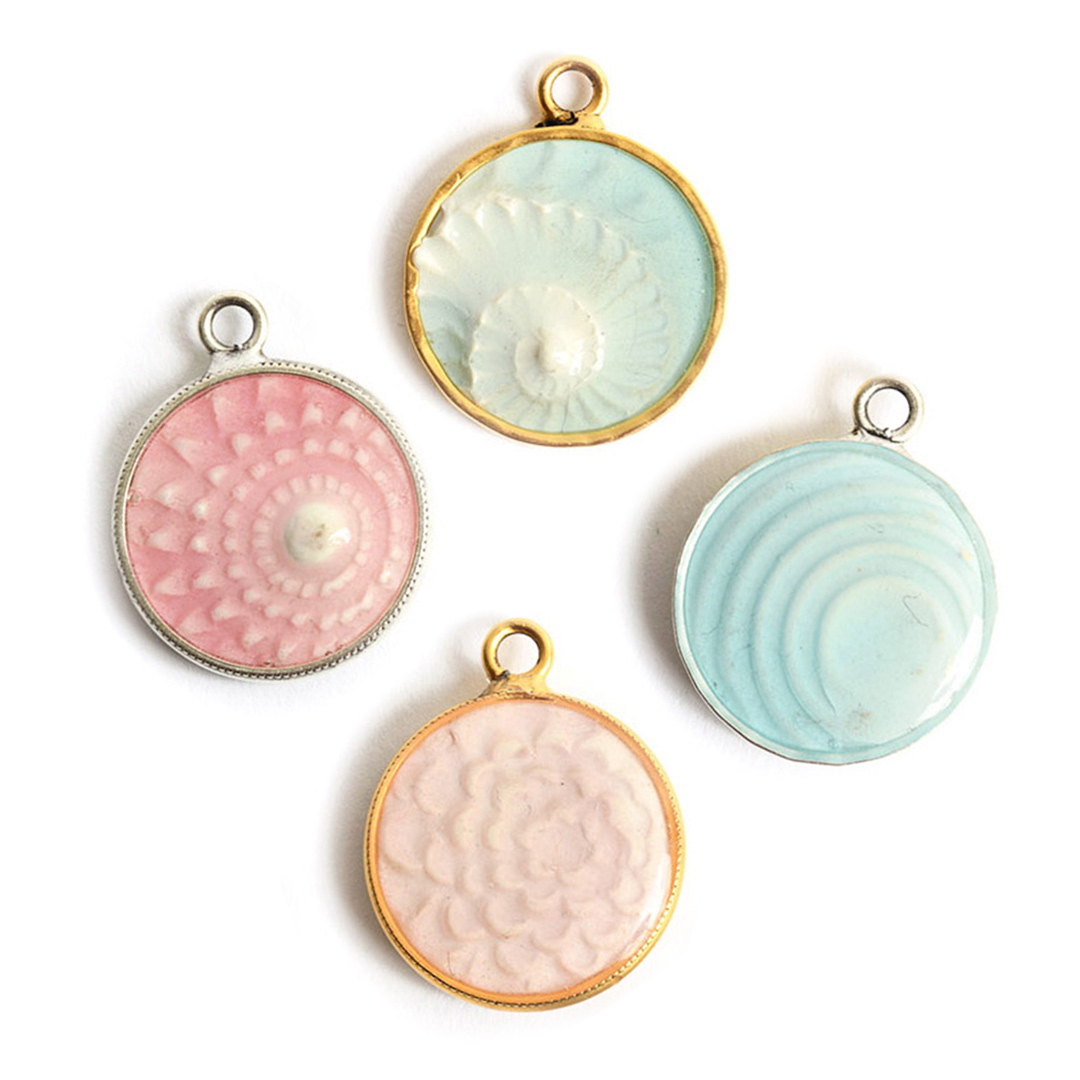
Create dimensional molds with 2-Part Silicone Molding Putty to make a sculpted Epoxy Clay impression. Once the clay is cured, mix and colorize some Nunn Design Resin to create really beautiful bezel pendants.
In this tutorial you will learn:
- How to make silicone molds using vintage buttons and found objects
- How to create silicone molds with perfect registration
- How to mix Epoxy Clay and make a sculpted relief using the silicone mold
- How to mix and colorize Nunn Design 2-Part Resin with Castin’ Crafts Opaque Pigments
This technique is ideal for the Nunn Design Open Bezel Deep Channels and the Open Frame Pendants in our product line. Because these bezel pieces are machined from brass and then plated, there are no irregular edges. Cast bezels do work, but the resin can seep out from underneath the rim of the bezel while it is in the mold. This causes additional clean up, but does look great!
This tutorial features our beaded and hammered Open Pendants Detailed.
Fast & Long Video Tutorials!
Watch this Fast Video For a quick overview of the technique!
Watch the full tutorial video where I walk you through the whole process.
Learn How!
Supplies :
Nunn Design Open Frame Bezels
Easy Mold Silicone Putty
Vintage button or dimensional object
Nunn Design Resin
Epoxy Clay – White
Castin’ Craft Opaque Pigments
Other Supplies Needed:
Q-Tips
Olive oil or baby oil
Rubbing Alcohol
Packing Tape
Wet wipes
Toothpicks or headpins
Gloves
Timer
Glossy business cards or card stock
Plastic bag for work surface
Preparing Your Nunn Design Bezels:
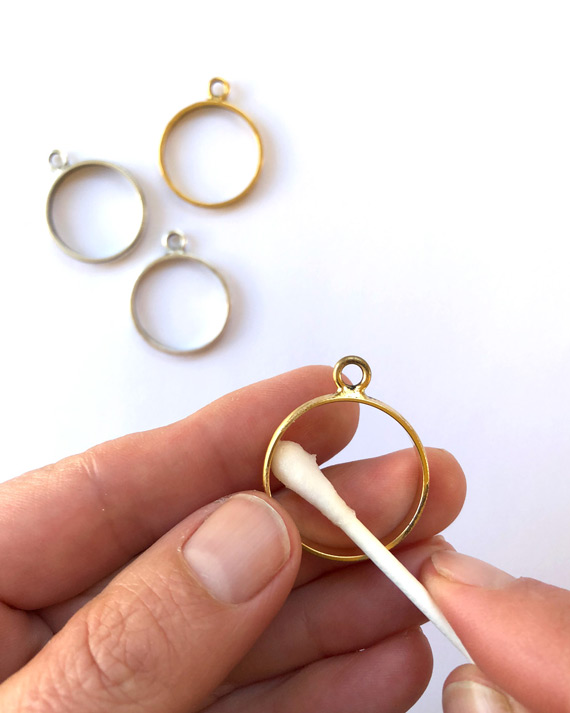
Step 1. The Nunn Design Findings are oxidized to provide the aged look to the precious metal plating. The oxidization, when it comes into contact with the mixed Nunn Design Resin could change the color of the resin. To avoid this, clean the findings thoroughly prior to applying the resin. Get the tip of a Q-Tip wet with rubbing alcohol and clean away any of the blackened oxidization on all the surfaces of the bezel.
Making of the Molds:
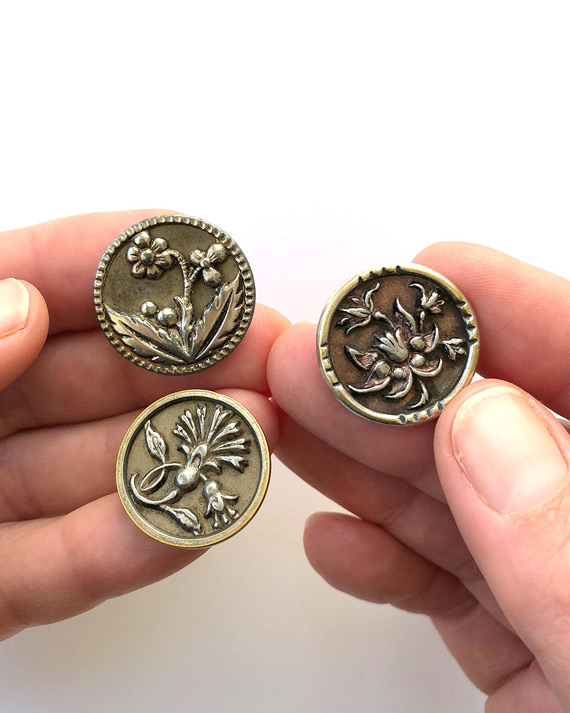
Step 2. Select a Nunn Design brass stamping, vintage button, or a found object. Objects with a lot of relief make the best molds. For this tutorial, I used several vintage buttons and a fossil.
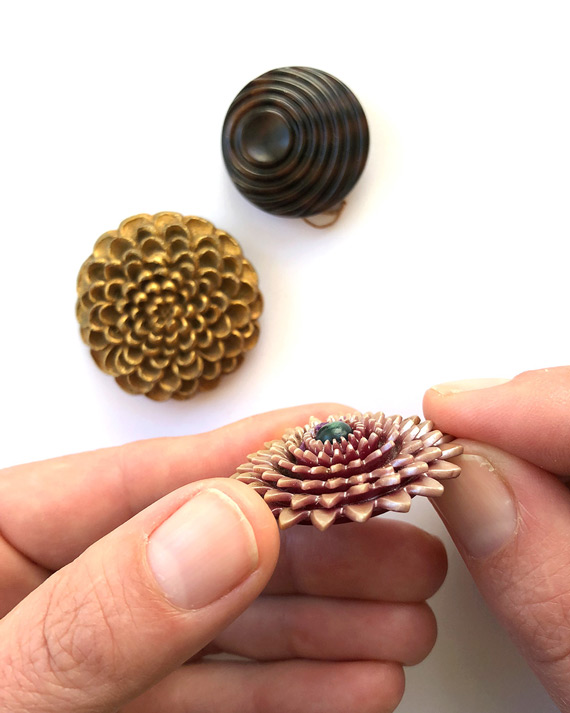
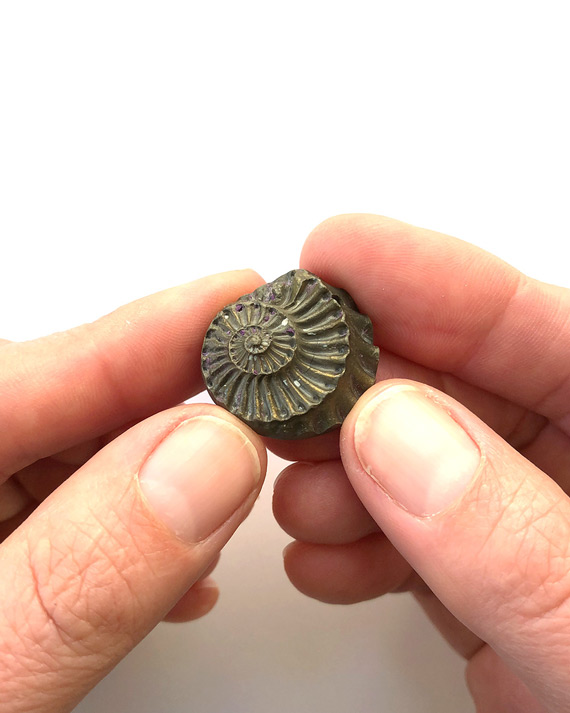
Step 3. Pinch off two equal sized balls of Part A and B of the Easy Mold Silicone Putty. Getting the knack for mixing just the right amount of putty will take some practice. You might mix too much or too little putty the first time. Try your best to guess how much putty you will need to have approximately 1/8” putty around the outside edge of your bezel’s rim. You will also want the thickness of the silicone putty to be approximately 1/8”.
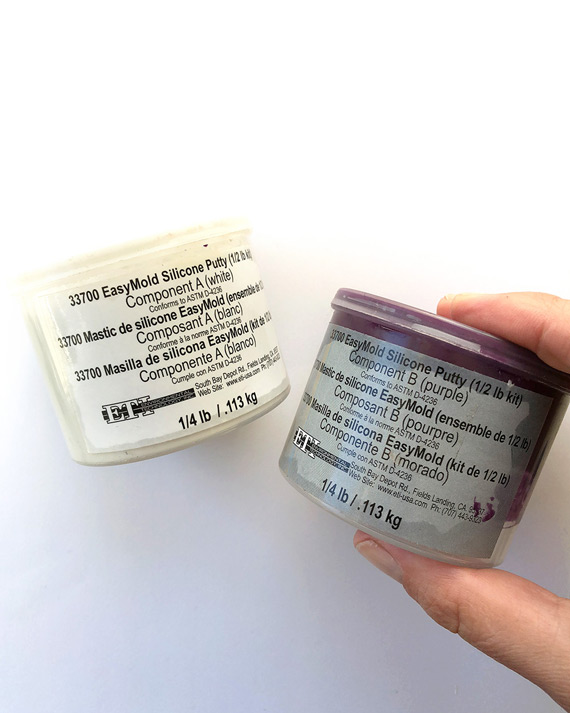
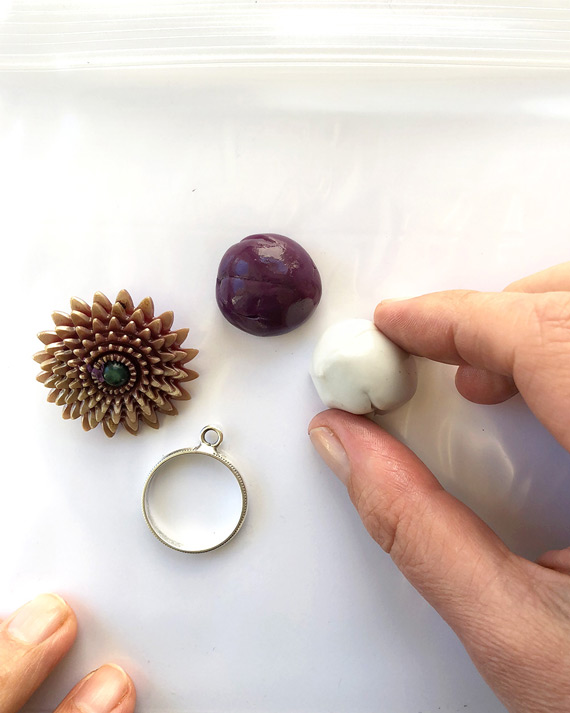
Step 4. Before mixing the two parts of silicone putty from Step 3, use a Q-Tip to smear around some olive or baby oil over the surface of the object you selected to make the mold with. If you are using a vintage button, thread a toothpick through the shank. This will allow you to easily pull the button out of the mold without disturbing the mold.
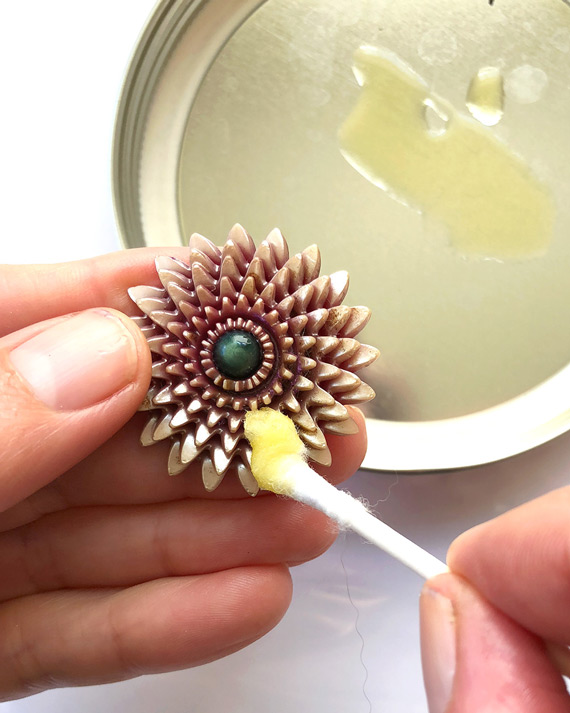
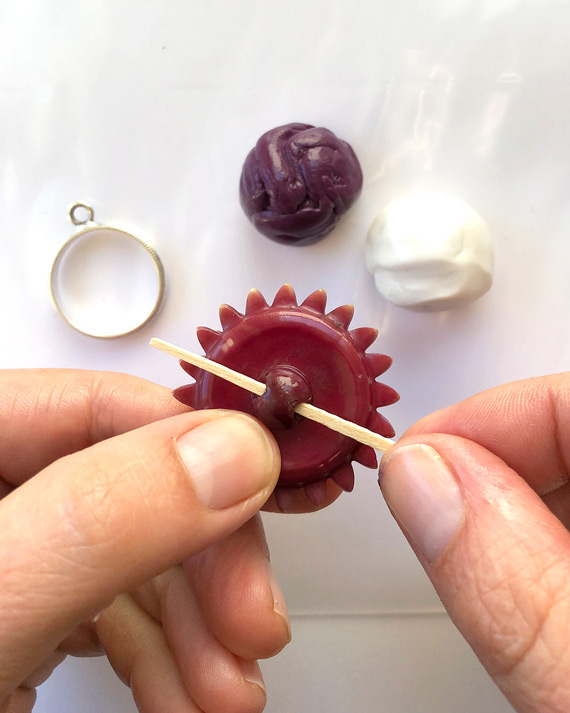
Step 5. The Easy Mold Silicone Putty has a 3-minute working time before it begins to harden and not take the impression. Knead both part A and part B together until the putty is blended completely and has a uniform color.
Step 6. Roll the fully mixed Easy Mold Silicone Putty into a round ball. Make sure the putty is smooth and not wrinkled (the creases in the putty will show up in the mold). I like to use the lid of the Easy Mold Silicone Putty to create a nice flat smooth disk. Place the mixed silicone ball onto a small plastic bag and press the lid evenly down into the putty.
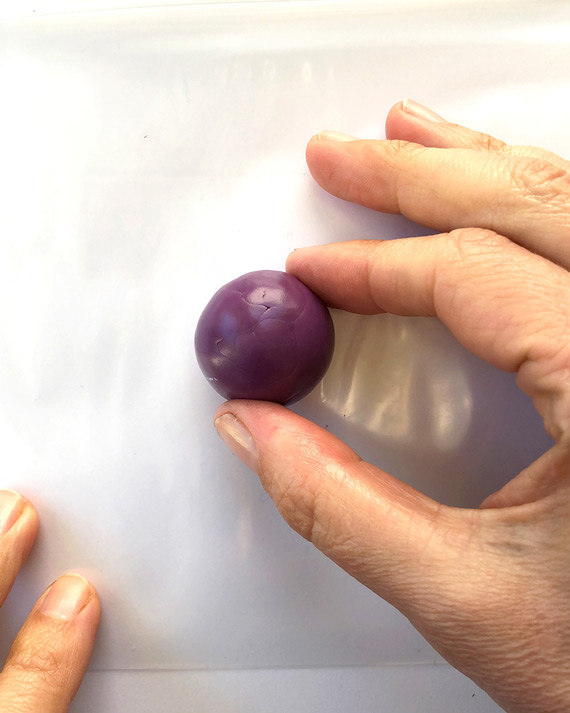
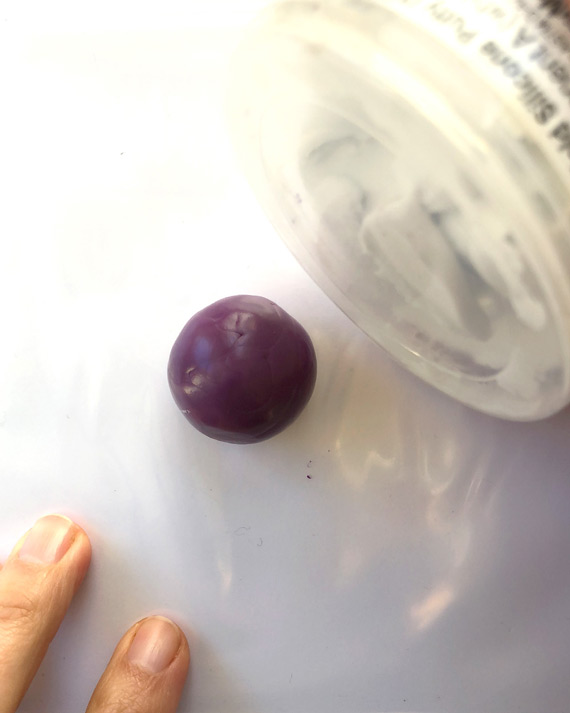
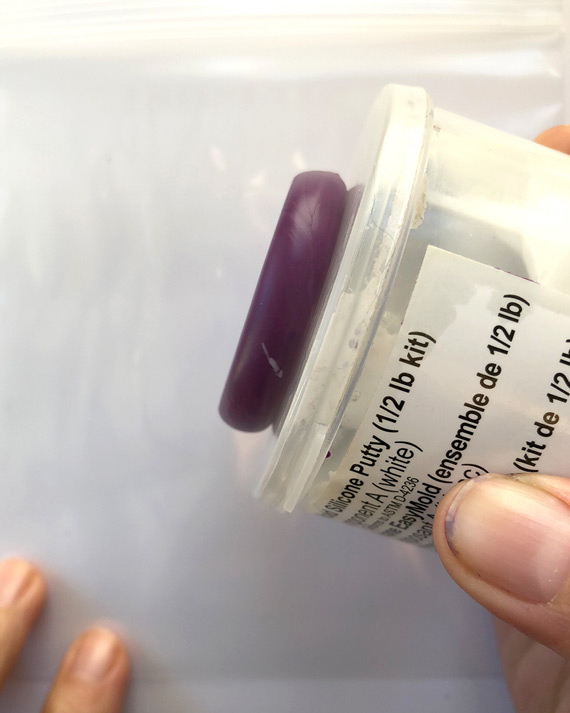
Tip: The button that I’m making a mold of is fairly thick, so I allowed the pressed silicone to be fairly thick.
Step 7. Remove the putty from the lid of the container and press the button into the silicone putty, but not so far into the putty that you hit the bottom. Quickly remove the button and press in your Open Back Bezel in a position that frames the impression of the button nicely. The loop of the bezel should be at the top of your framed impression, allowing you to have a perfect registration with each imprint.
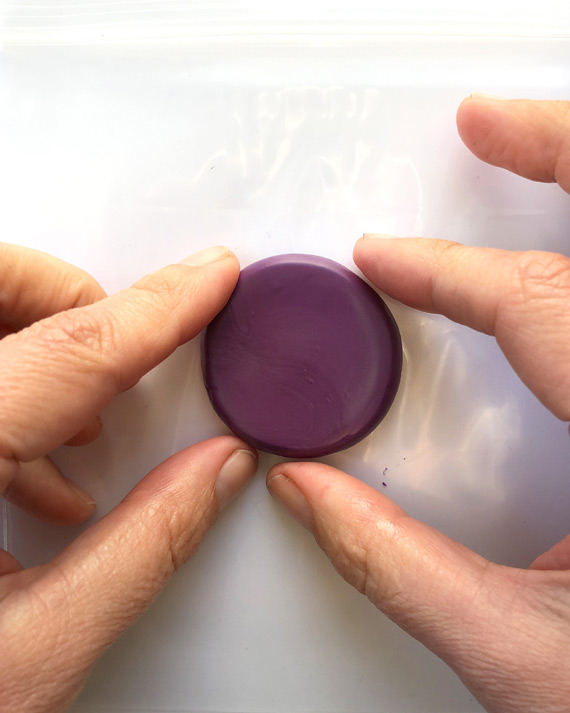
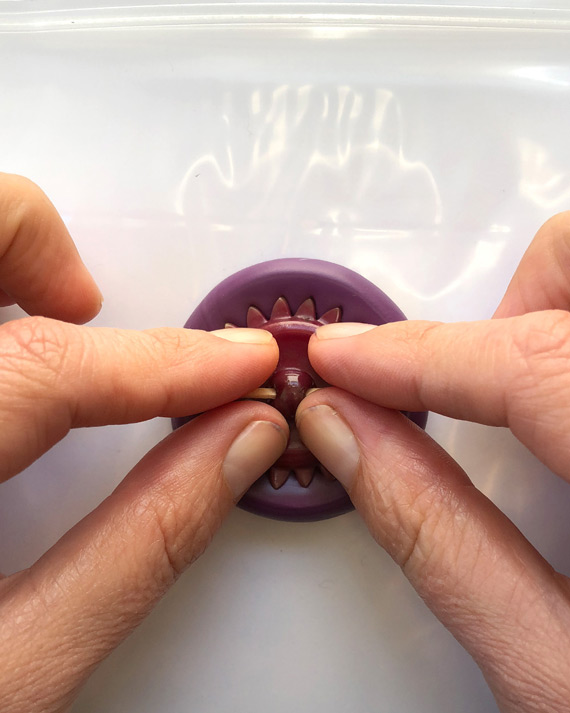
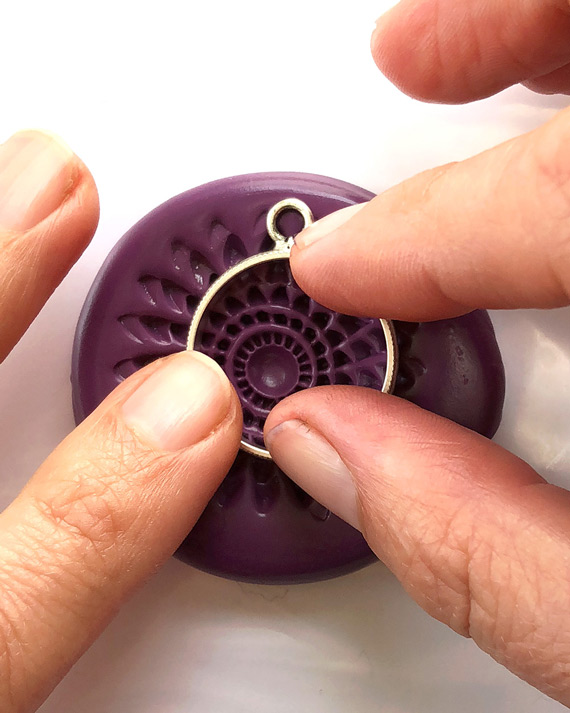
Step 8. Clean the button with a wet-wipe. If you have any Silicone Molding Putty within the various crevices of the button, remove them with a toothpick.
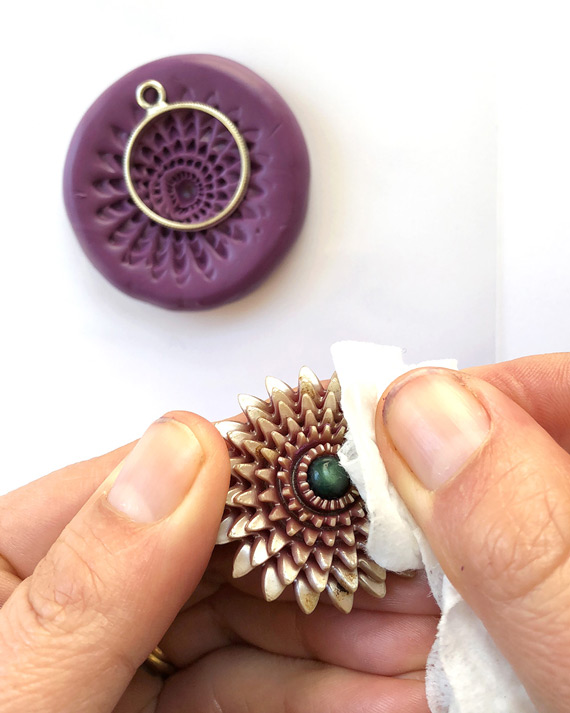
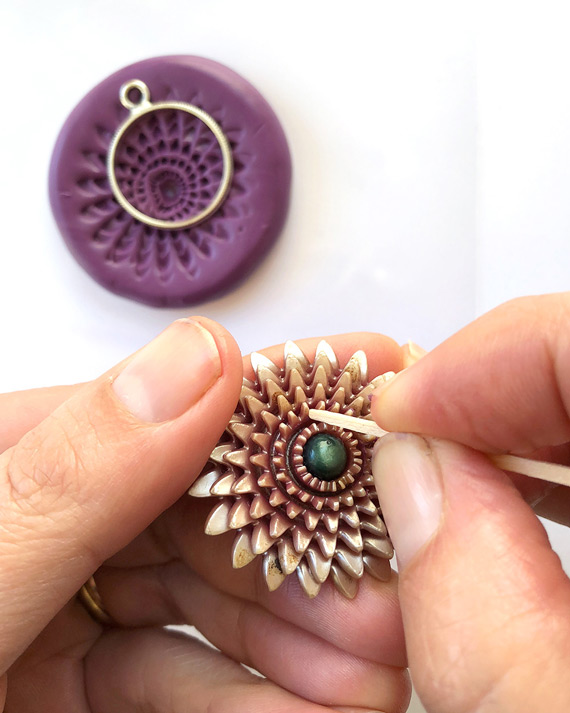
Step 9. Let the mold set-up for 20 minutes.
Mixing and Sculpting the Epoxy Clay:
Step 10. Follow the manufacturer’s instructions for the handling and mixing of the Epoxy Clay. While wearing gloves, pinch off two equal sized balls of Part A and Part B and blend together fully until the clay is no longer marbled and uniform in color.
Tip: I guesstimate the amount of Epoxy Clay that I will need to fill the bezels for the project I’m working on. I would recommend under mixing the amount of clay and having to mix frequently, versus feeling the pressure to work fast or to have waste.
Step 11. You have approximately 90-120 minutes of working time before the clay starts to harden, so take your time. Once the clay is thoroughly mixed, remove your gloves to make it easier to work with the clay.
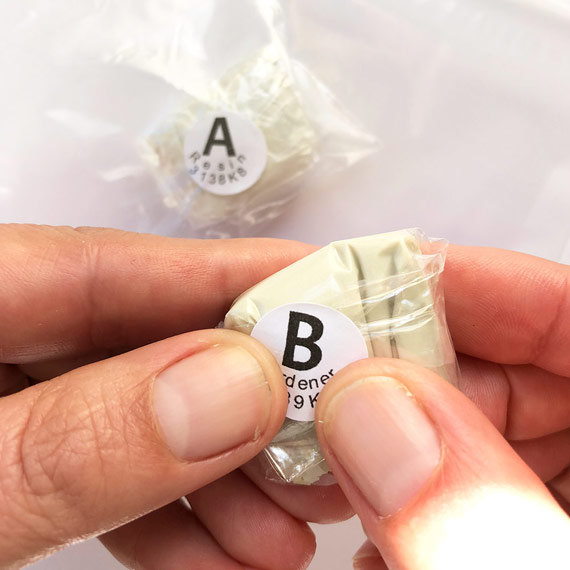
Tip: Make sure to wrap up your Epoxy Clay to prevent it from drying out and hardening. Store Part A and Part B in separate zip-lock bags.
Step 12. Roll the thoroughly mixed Epoxy Clay between your palms until it forms a smooth round ball.
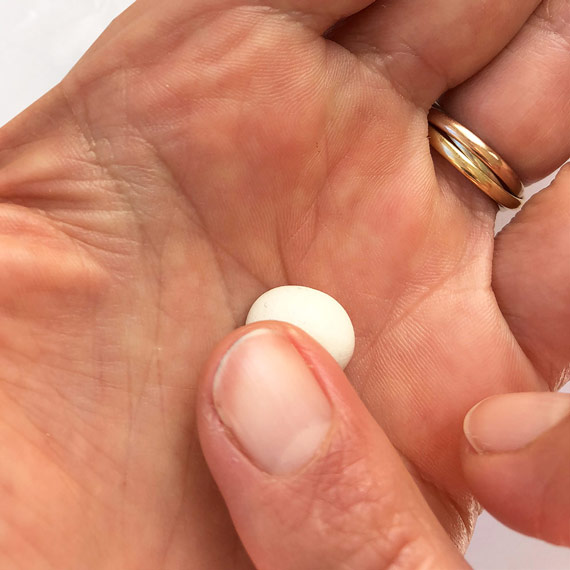
Step 13. Smear some olive oil or baby oil onto the end of your fingertip. This will prevent the Epoxy Clay from adhering to your fingers when you press the clay down into the mold to make the impression.
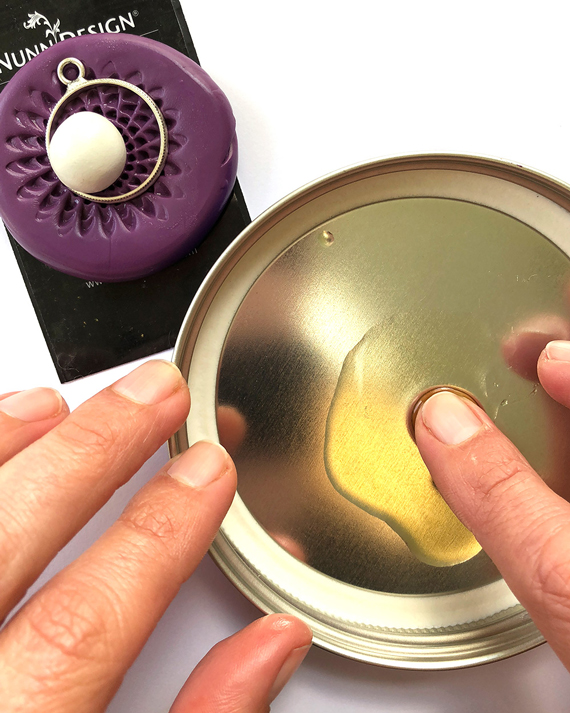
Step 14. Press the ball of mixed Epoxy Clay into your bezel using the tips of your oiled fingers. For this particular technique, I wanted the Epoxy Clay to be flush and level with the back side of the bezel. If you have too much clay, you can pinch off the excess and pat down until smooth again, or remove it from the bezel altogether to remove the excess.
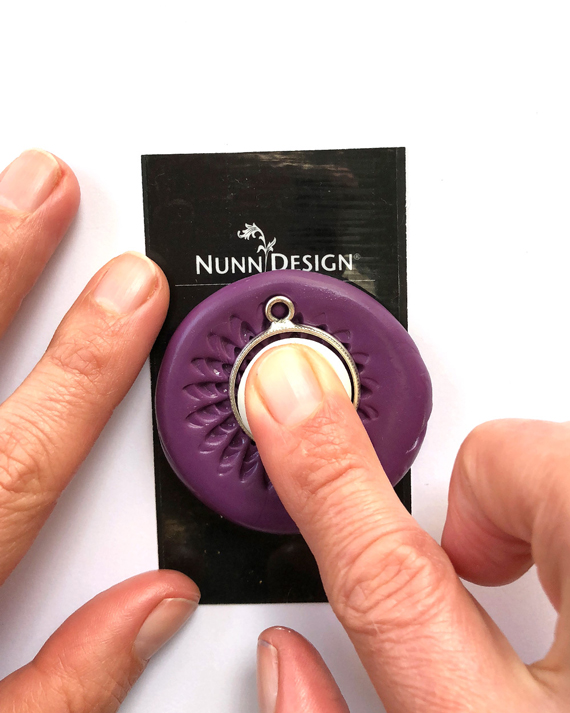
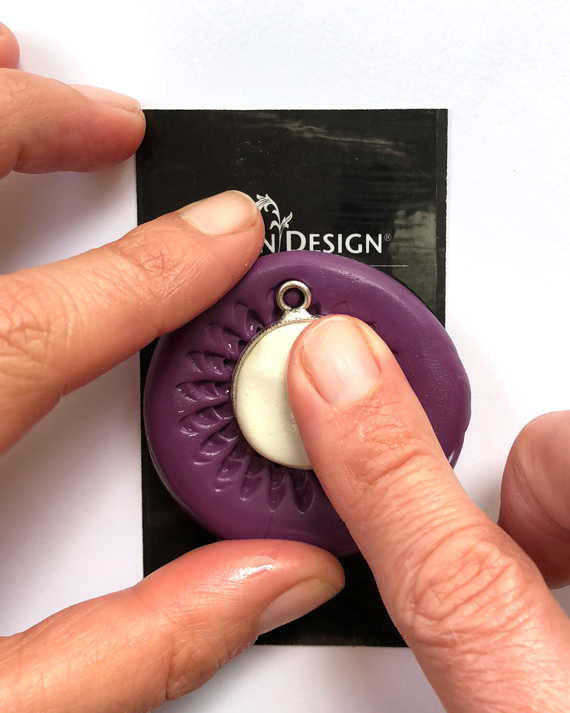
Step 15. Before removing the Epoxy Clay from the mold, use a wet-wipe to smooth the Epoxy Clay within the bezel and to clean the sidewalls.
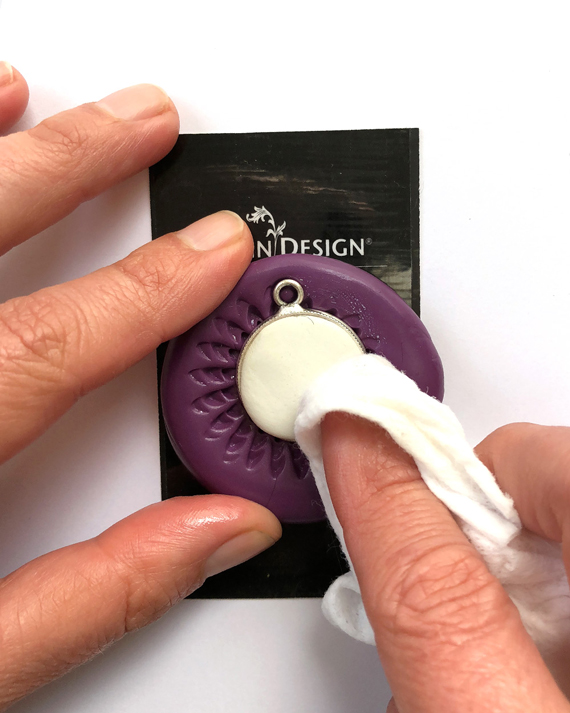
Step 16. Remove the bezel filled with Epoxy Clay from the mold and take a look at your impression. If you like the impression, great. If you do not, remove the Epoxy Clay, clean the bezel, roll the clay into a smooth round ball and repeat steps 14-15.
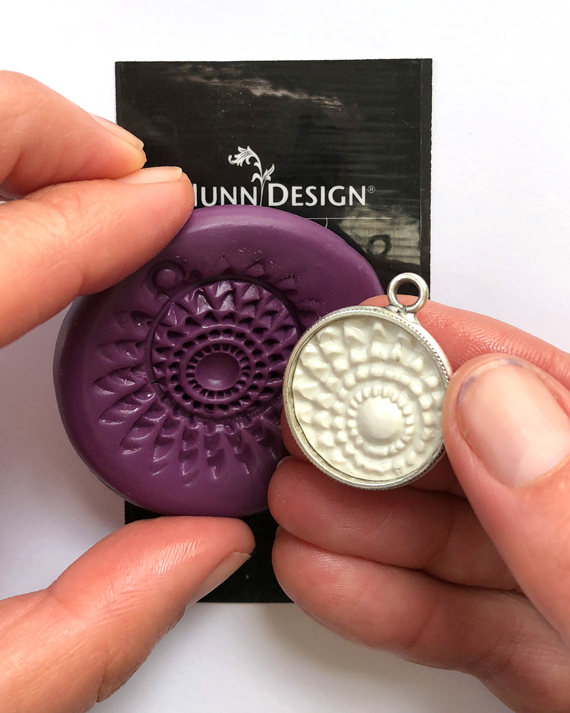
Tip: It is easy to get little fibers mixed into the clay. Use a toothpick to remove them from the clay and pat the surface smooth again.
Clean Up & Cure:
Step 17. Use a wet-wipe to clean-up any excess Epoxy Clay that might have been left on the front side of the bezel. The Epoxy Clay hardens like cement, so cleaning it up now and being tidy as you go makes the process easier and the results so much nicer.
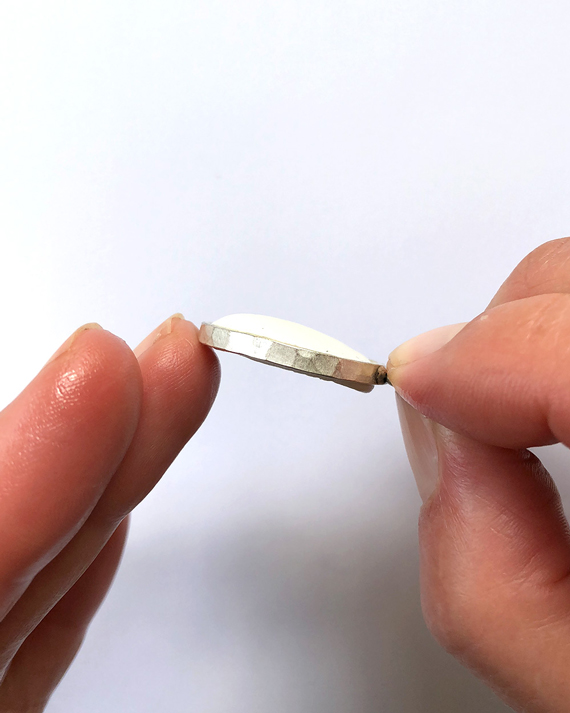
Step 18. The backside of the Epoxy Clay, whether it is slightly domed or not, can stick to the surface that it is curing on. To prevent the backside from being dented or altered, thread a toothpick through the loop of the bezel and rest the toothpick on the sidewalls of a resin mixing cup.
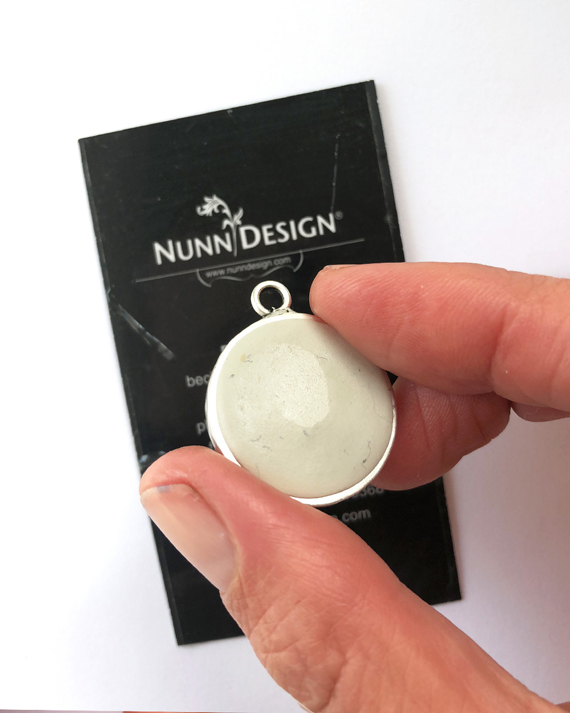
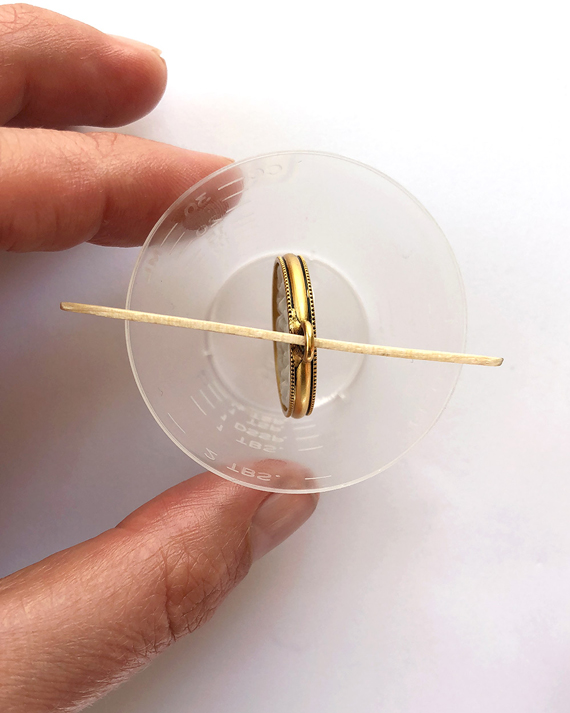
Allow the Epoxy Clay to cure for 2 hours. It will continue to cure over the next 12 hours, but after 2 hours it will be hard to the touch.
Mixing Nunn Design Resin:
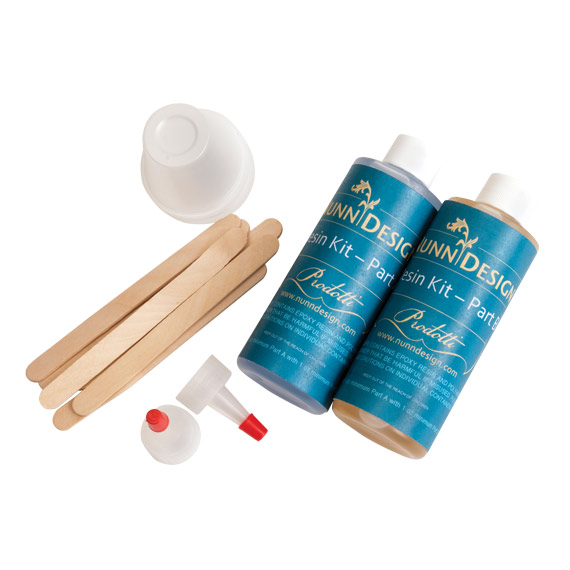
Step 19. Read the resin instructions for safety concerns regarding the Nunn Design Resin.
When I work with resin, I always:
- Have my room heated around 70-73°
- Place a large plastic bag over my work surface and tape it down
- Make sure I have ventilation in my workroom
- Wear gloves
- Wear glasses (readers because I can’t see anymore. Plus it protects my eyes!)
- Have a pile of wet wipes handy
This is a great blog post that covers 20 Habits for Successfully Using Nunn Design 2-Part Epoxy Resin. Even if you are a seasoned resin mixer, this might be worth a read.
Step 20. Place one cup (included in the Nunn Design Resin Kit) onto your table. For curing purposes, it is very important that the resin be an exact 1 to 1 ratio of Part A and Part B. I suggest getting your eyes level with the resin so you can see the lines on the measuring cup.
Pour Part A of your resin kit up to the 1 TBS mark on your measuring cup.
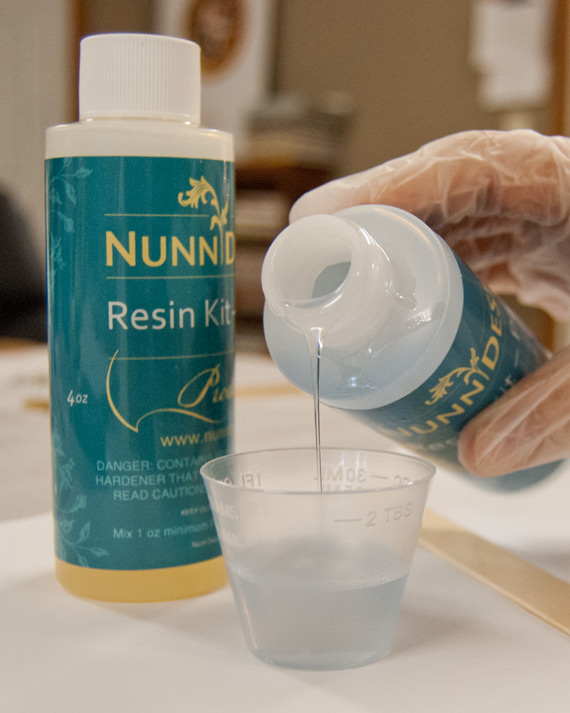
Pour Part B of your resin kit into the same cup until it is filled to the 2 TBS mark.
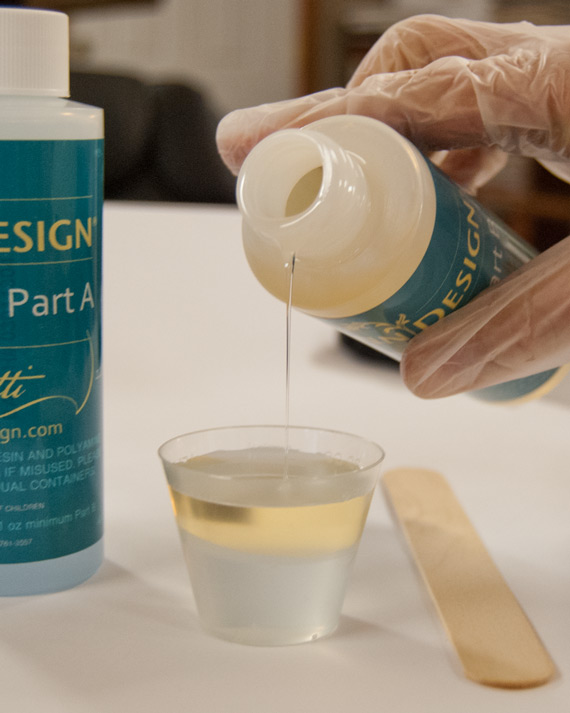
It is important to pour Part A first and then Part B. It is some chemical thing about part A being heavier or something.
Step 21. Set your timer for 2 minutes. Using the stir stick from your kit (a popsicle stick or coffee stir stick will work great too), slowly and carefully stir your resin scraping the sides as you stir. Stir for a minimum of 2 minutes. If your resin is still cloudy continue to mix until clear.
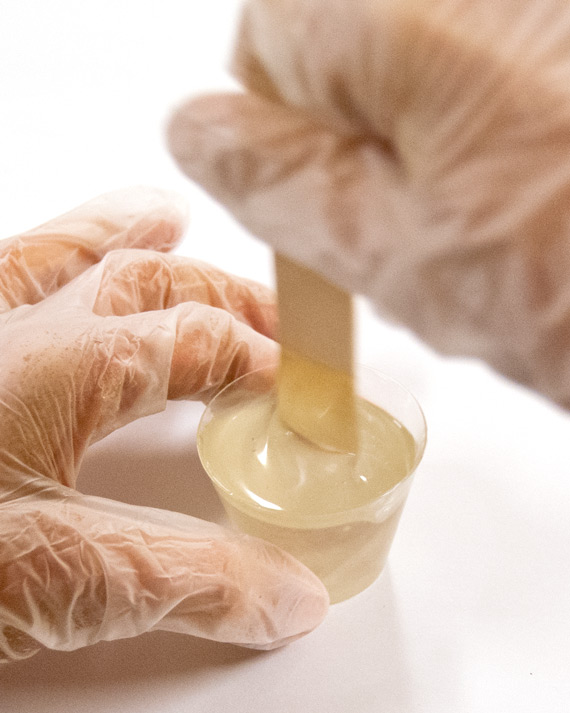
After mixing is complete and your resin is clear, scrape both sides of your stir stick on the edge of your resin filled cup.
Colorizing the Nunn Design Resin:
Step 22. For this tutorial, I used Castin’ Craft Opaque Pigments in Blue and Red to colorize the Nunn Design Resin. To create Pantone Colors, take a look at our cheatsheet for the color mixing formulas:
Step 23. To colorize the resin, place another empty resin mixing cup onto your work area. Pour the clear, mixed resin into the cup, filling it to the 1 TSP (you may need more of the full TBSP mixed, but you can easily colorize more).
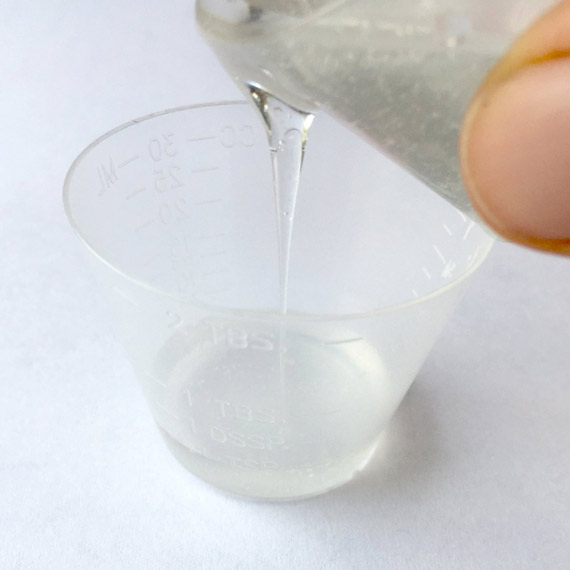
Step 24. Add a toothpick tip of Castin’ Craft Opaque Pigment – red or blue colorant into the clear mixed Nunn Design Resin and mix fully until blended. If you want the color to be even more opaque, add more of the Castin’ Craft Opaque Pigment.
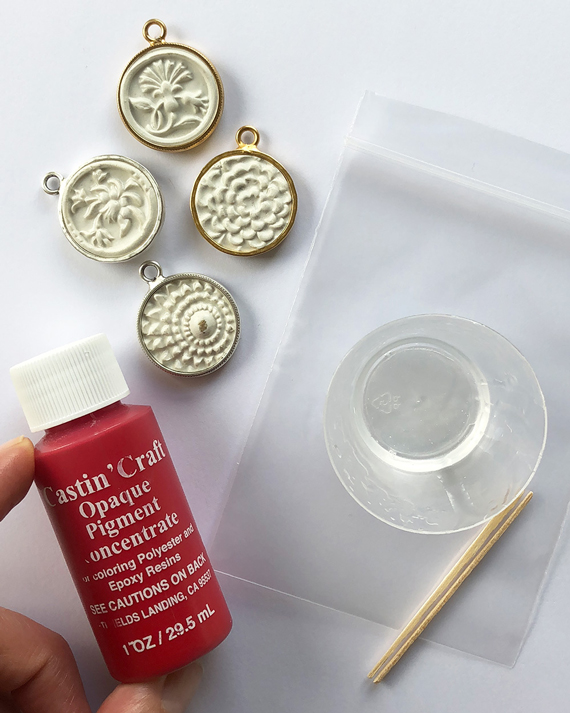
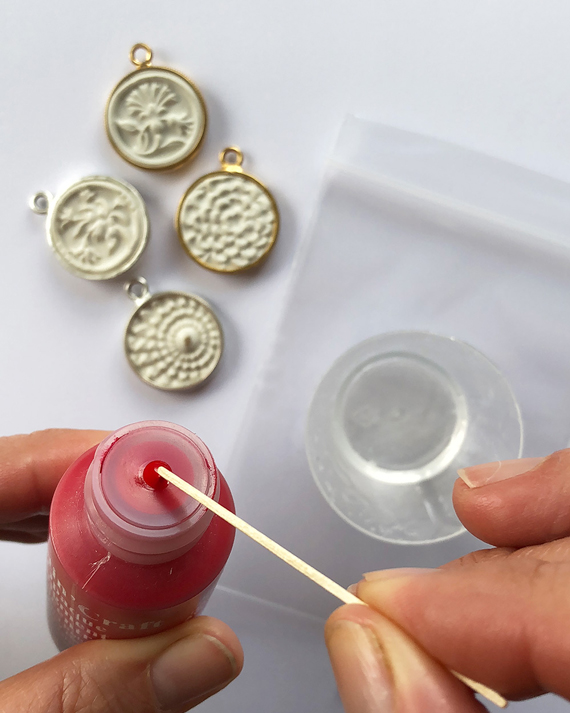
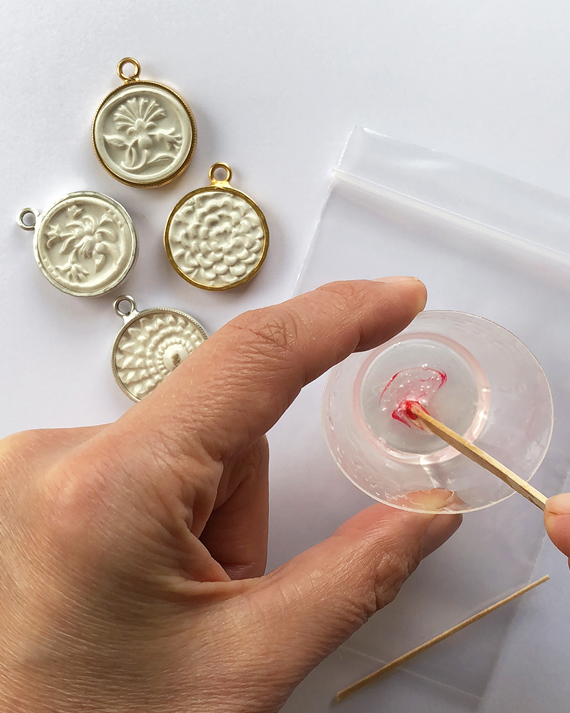
Tip: Be sure that the colorant does not equal more than 10% of your resin as having more than 10% could cause issues with curing.
Step 25. I tend to work in a small area (typically my kitchen table), so I like to work on a surface that projects can be easily moved around and not disturbed. Place some business cards or some heavy card stock onto your work surface, making it easy to move the pendants without getting any resin on your fingers.
TIP: I would recommend covering the card with glossy packing tape. This will prevent the resin from sticking to the paper.
Step 26. Drizzle a small amount of colorized resin onto the cured Epoxy Clay. Agitating the resin will help dislodge any air bubbles lurking below the surface. Continue to drizzle the colorized resin until the bezel is domed.
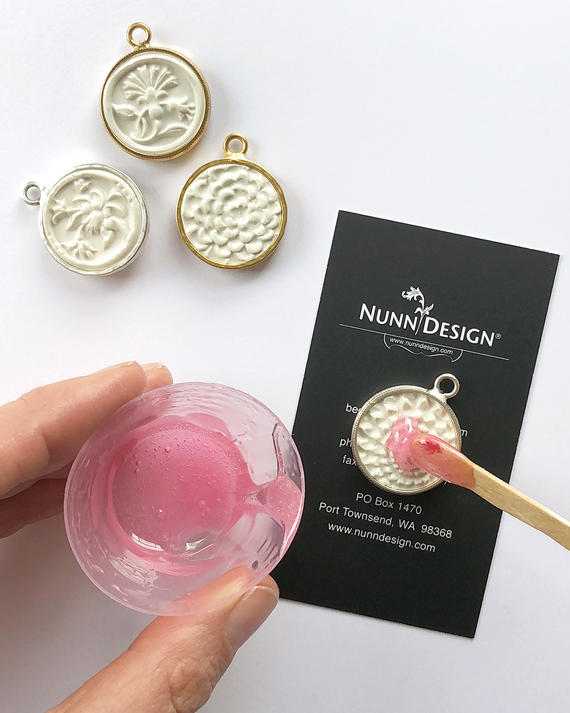
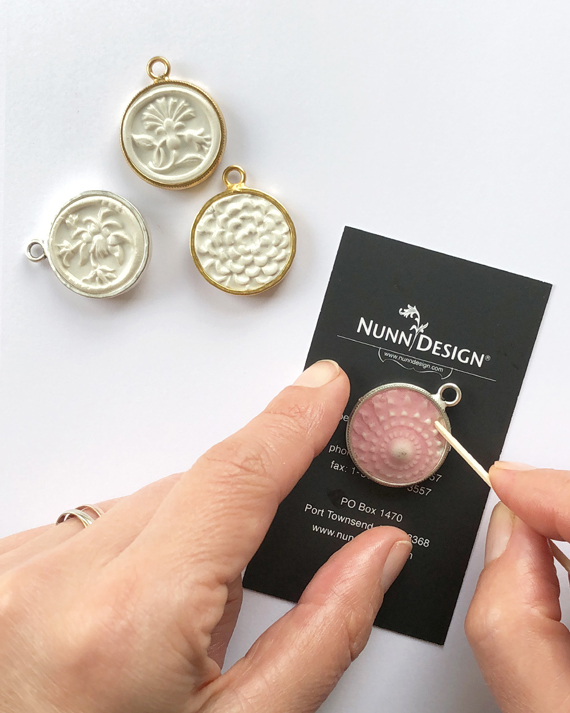
Step 27. If you see bubbles rising to the surface, using your hot breath, breathe on them. It isn’t a “blow” sort of breath – more of a “huff” sort of breath. The hot air will make the bubbles expand, rise to the surface and pop. As the resin starts to set-up and becomes thicker, it will be more difficult for the air to rise to the surface. Make sure to check in on the curing resin and double check for air bubbles. If you do have some bubbles that won’t pop with your “huff”, use a toothpick to gently drag them over to the sides. This agitation process will help them to pop. When the resin is thick and taffy-like in texture it is time to let it be. If you attempt to pop bubbles at this time, you may end up with a gooey mess.
Step 28. If you have resin that has over-poured, wait about 6-12 hours until the resin is at its “soft cure” phase. Use a pair of needle nose pliers to bend back the resin from the bezel. The resin will easily separate and peel off of the bezel.
Step 29. Let the resin cure for 12-14 hours. The resin will be hard to the touch but will continue to cure for the next 72 hours.
Our Most Popular Technique Is All The Buzz!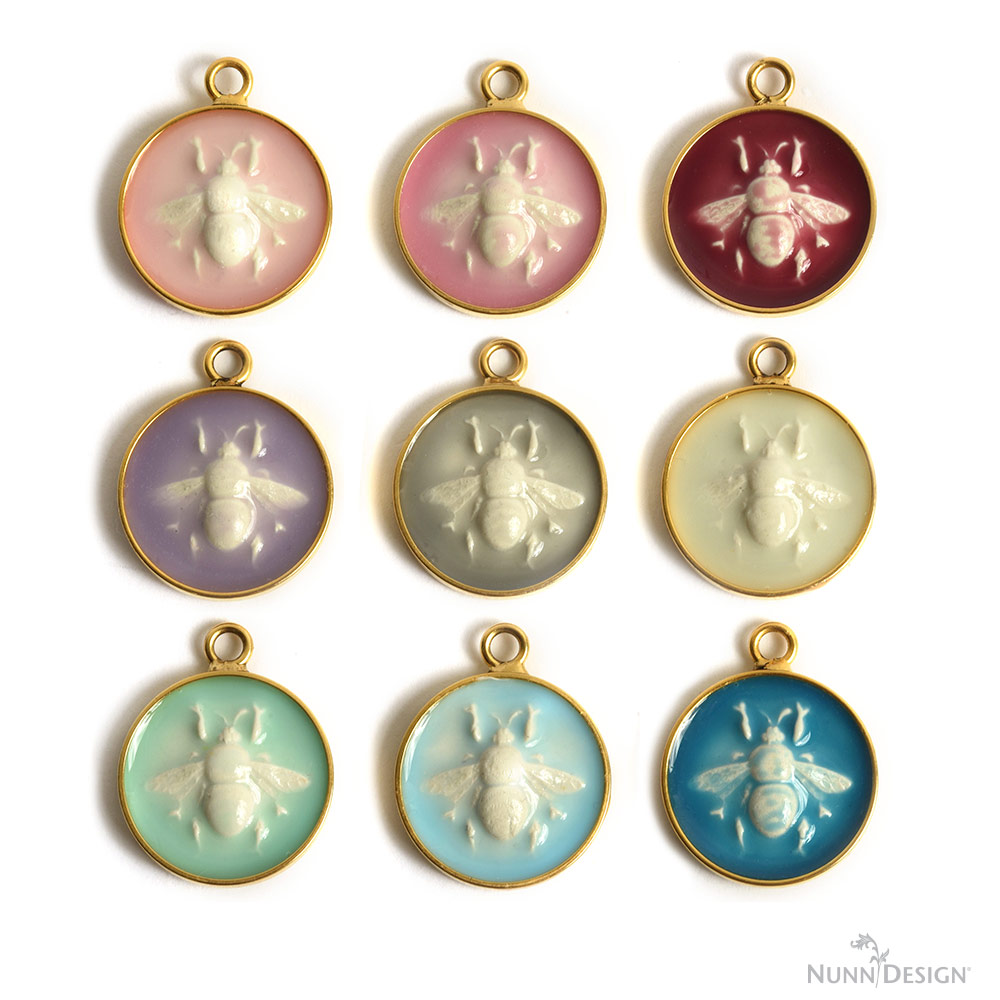
This technique isn’t new for many of you long term Nunn Design Makers, but it is still one of our most popular techniques. Bring in the spring and summer with a fresh new look.
The beauty about this technique is that you can change out the mold, the bezel and the resin color and you have a whole new collection! The possibilities are waiting for your unique expression of creativity!
Shop Nunn Design Wholesale
Nunn Design has been supplying jewelry artists with findings for over 20 years. Shop wholesale jewelry findings for creative jewelry makers.
Shop Nunn Design!How to Purchase Wholesale?
If you are interested in becoming one of the many designers who trust their jewelry to Nunn Design Findings, please join us by registering to become one of our wholesale customers!
Please visit our Where to Buy Page for a listing of online stores that sell Nunn Design Findings retail.
If you enjoyed reading this post, please subscribe to our blog. Here are 10 Reasons Why to Subscribe and a place to do so!






